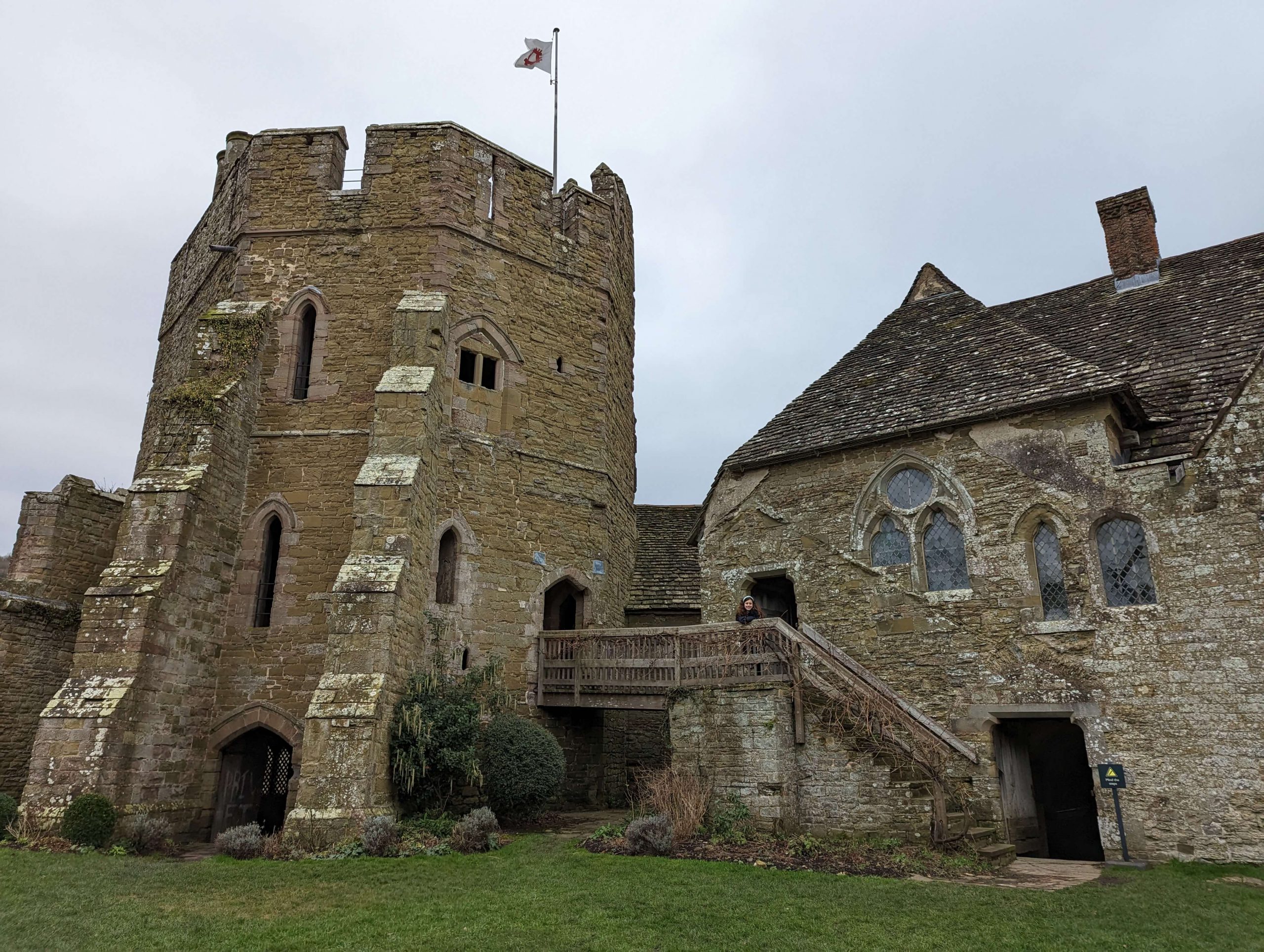Stokesay Castle was built in the 13th century and is unique in that it has hardly been altered since. The house was built in local stone which was unusual for the time. Although Stokesay Castle was granted a licence to crenellate (fortify with battlements), it is more a fortified manor house than a castle and has avoided most warfare. The castle is situated in the county of Shropshire, along the road from Ludlow to Shrewsbury and close to the English border with Wales.
| Built | 13th Century |
| Type | Fortified Manor House |
| Condition | Ruinous – Major Stonework Intact |
| Ownership | English Heritage |
| Access | Public – Admission Fee |
Click here to watch our video exploring Stokesay Castle and discover it’s history
When the Domesday Book was compiled in 1086 following the Norman Conquest, Roger of Lacy is shown as the owner of Stokesay (the land was called Stoches at the time) and there is no mention of a castle or manor on the land.
In the early twelfth century, Theoderic de Say was the tenant of ‘South Stoke’, eventually Stoke and Say merged together and it became known as Stokesay. It is likely that the de Say family built a tower at the north end of the castle.

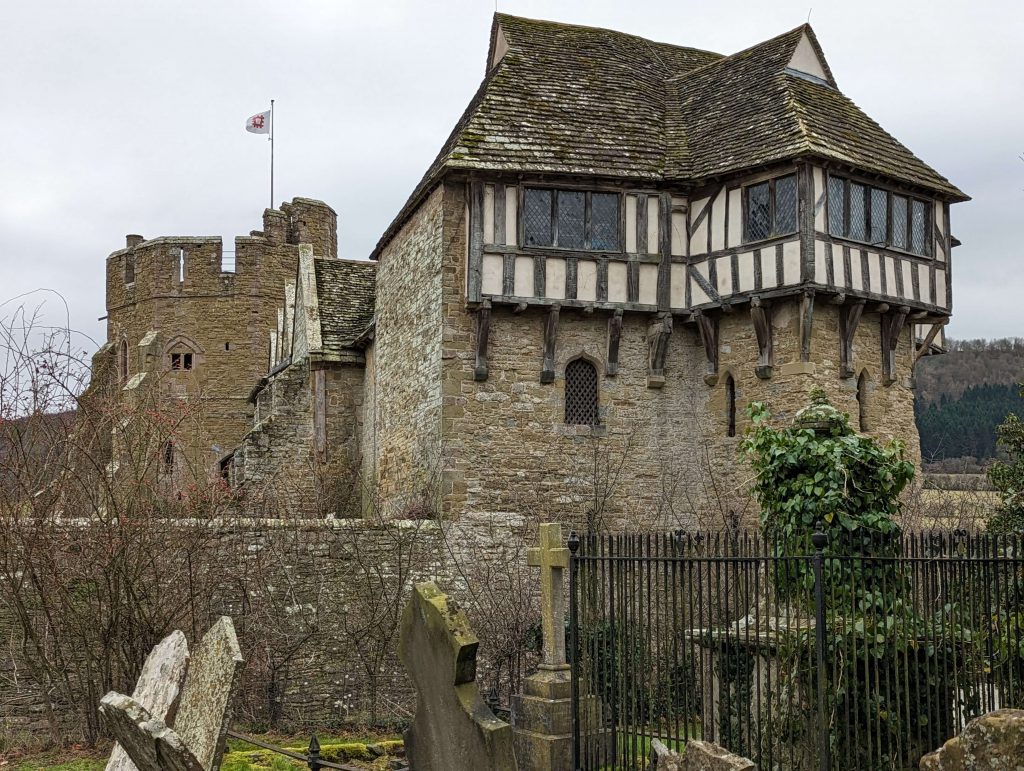
When Walter de Lacy died in 1240, his son-in-law John de Verdon inherited Stokesay. During this era troubles between the English and Welsh were high and John was a Marcher Lord that was required by Henry III to live on his estate to counter the threats of Welsh raids.
By 1270 John de Verdon had ventured off on crusade and allowed the manor to be let. In 1281, wool merchant Lawrence of Ludlow bought the tenancy. Wool is considered to have been England’s most important export during the later thirteenth and fourteenth century and Lawrence was a very successful and wealthy wool merchant. Lawrence’s wealth allowed him to invest in land, several other manors and property in Ludlow, which generated substantial rental income.
Lawrence soon set about building an impressive country house at Stokesay, this was quite unusual at the time, country houses were normally reserved for the gentry, perhaps Lawrence had aspirations for his family’s status to rise.
Since Llywelyn ap Gruffydd’s death in 1282, Welsh raiding had ceased and there was relative peace on the Welsh/English border and therefore the house was built more for domestic use and comfort rather than defence, although the moat did provide some security. Lawrence’s ambitious project included a new Great Hall that measured 34ft (10.3m) high and was 52 x 31ft (16 x 9.5m). This new hall also had windows that were partly shuttered and partly glazed. Glass was extremely expensive at this time so by having glazed windows it clearly demonstrates Lawrence’s vast wealth.


On the south side of the great hall, Lawrence built a solar block, a private chamber for himself and his family. The room had large windows to allow plenty of light and warmth from the sun inside. On either side of the fireplace there are ‘squints’, openings that overlook the great hall and allow the family to keep watch on activities in the hall.
In 1291, Lawrence obtained a ‘licence to crenellate’ (fortify with battlements) from Edward I, which he applied to the south tower, curtain wall and gatehouse. Having battlements on your home had become quite a fashionable status symbol, so this may have been done more for show than defence. A stone gatehouse, drawbridge and rock cut moat that was filled with water were also added.
In 1294, Lawrence was the head of a consortium of merchants who agreed to raise money from wool exports to finance Edward I’s war in France. The fleet of ships carrying the wool set sail to the low countries with Lawrence commanding them, but they did not reach their destination, they were wrecked off Aldeburgh and Lawrence drowned.
Lawrence’s family continued the wool business and many generations of the Ludlow family continued to reside at Stokesay having established themselves as respected country gentry.
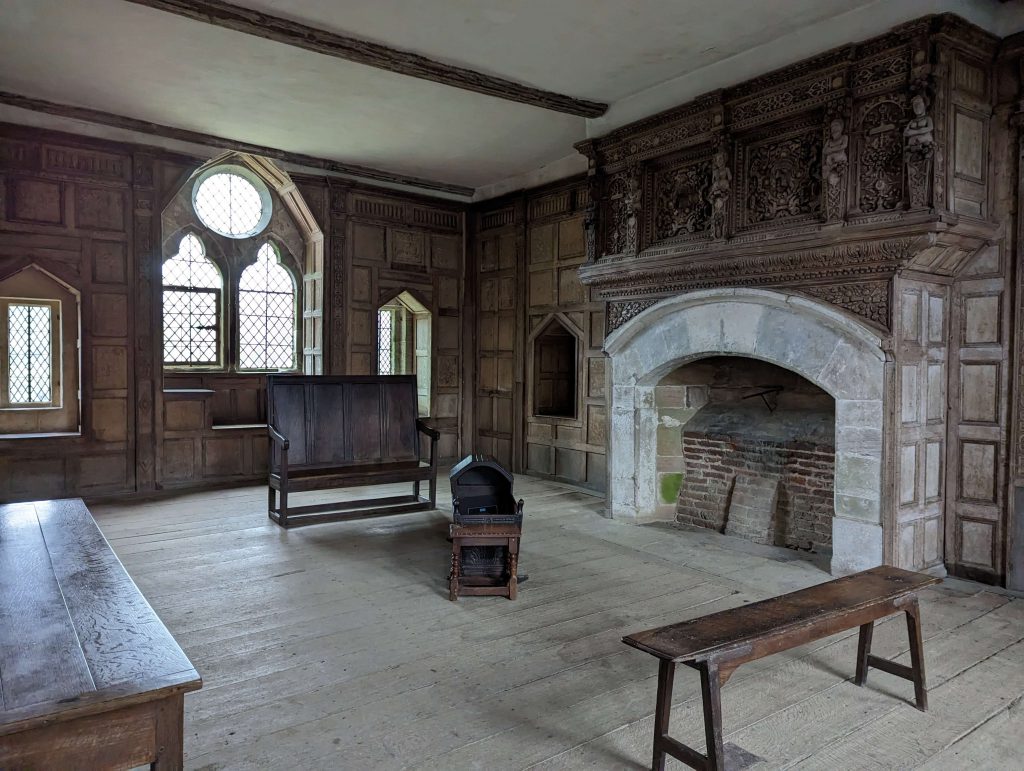
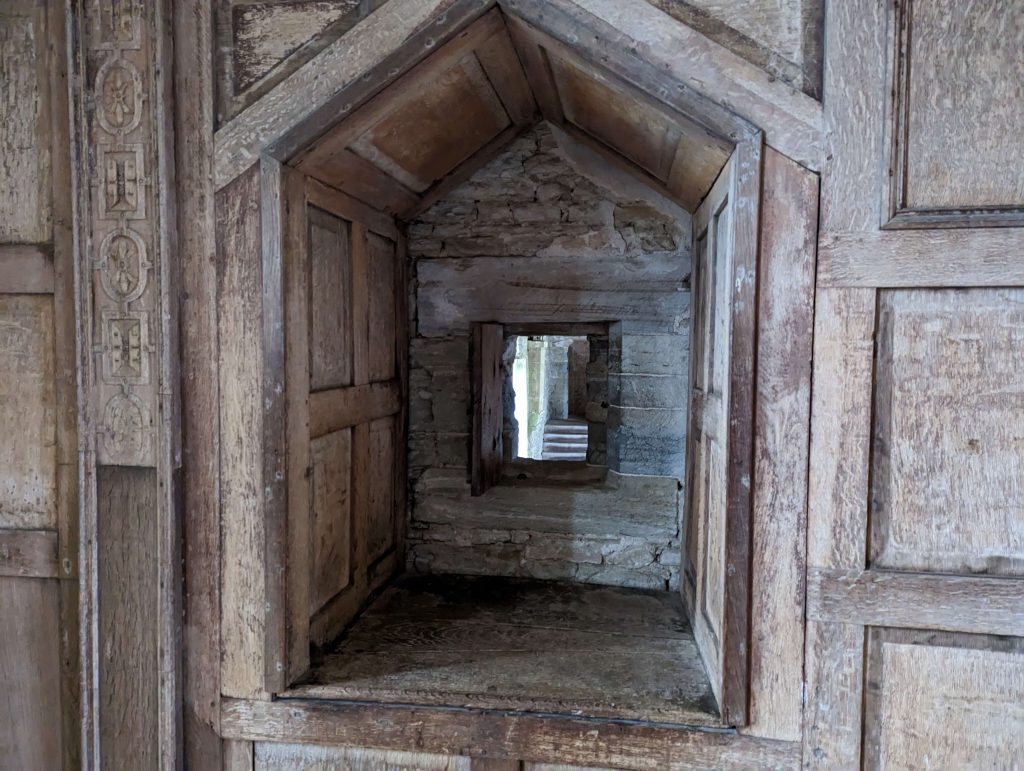
The last Ludlow heiress married Thomas Vernon, the Vernon’s were a wealthy Derbyshire family with a higher social profile. Stokesay passed to Thomas’s grandson, Henry Vernon. Henry had visions of grandeur and was nearly ruined by his futile attempts to claim the Barony of Powys. In 1591, Henry was arrested for debt and he was forced to sell Stokesay Castle to Sir George Mainwaring in 1596. The record of the sale shows that the castle now had a park attached that was stocked with red and fallow deer.
In 1620 Stokesay Castle was sold to Dame Elizabeth Craven and her son William who went on to become the first Earl of Craven. William pursued an adventurous military career in Europe which saw him being imprisoned with Prince Rupert in an attempt to obtain the throne of Bohemia for the Elector Palatine.
William also left his mark on Stokesay Castle, in about 1640 he spent £540.00 on building works to the castle and it is believed he is responsible for building the current gatehouse.
William was a staunch Royalist and when the English Civil War broke out in 1642, Stokesay was garrisoned on the King’s behalf. This is the only time that Stokesay ever saw any military action, although it was rather brief. When the Parliamentarian’s armies moved into Shropshire in 1645, Stokesay surrendered without a fight. Stokesay Castle was ordered to be ‘slighted’ but got off lightly as only the curtain walls were demolished.

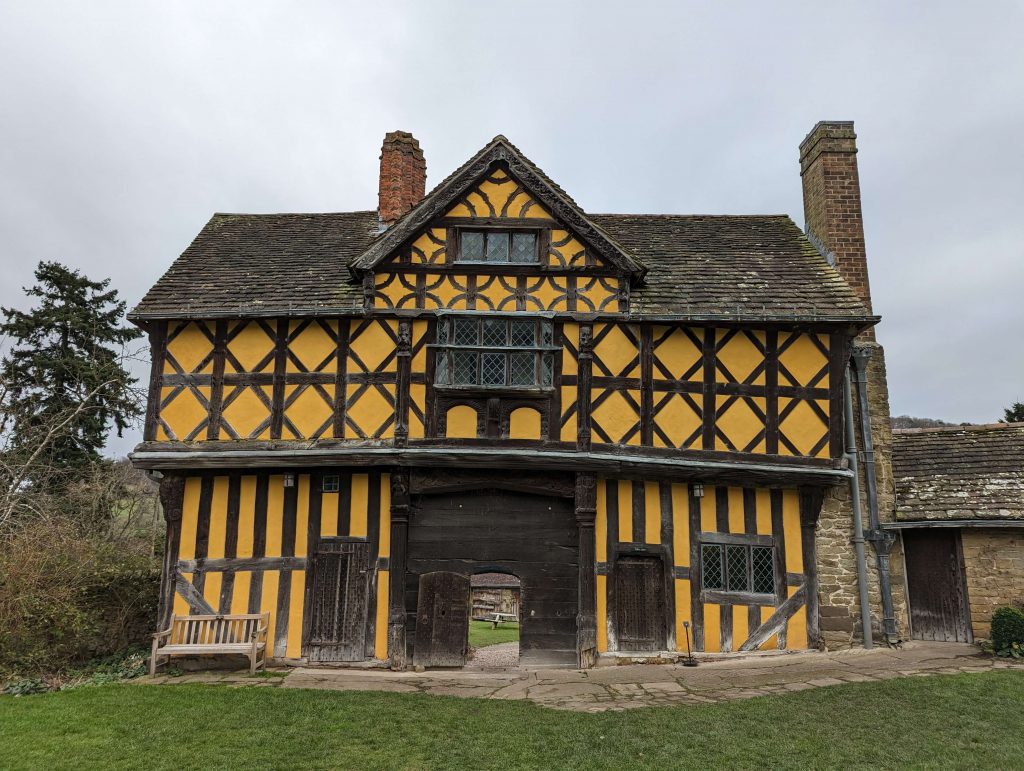
The Civil War ended in 1645 and in 1648 Stokesay Castle was let out to Samuel Baldwyn. The Baldwyn family took good care of Stokesay and are believed to have helped restore it. It is thought they installed the panelling in the solar tower and new windows in the north tower.
In 1660, William Craven recovered all his estates after Charles II was restored as king. William and his heirs continued to let out Stokesay Castle to the Baldwyn family until the Bladwyns left in the early 18th century. Stokesay was then let out to tenant farmers who used the building for farming rather than domestic purposes which caused the castle’s condition to become more and more dilapidated.
Disaster struck in 1830, the basement of the south tower had been converted into a smithy and a fire broke out which quickly spread to the floors above. It was around this era that interest in gothic architecture was developing and the castle began to become popular with visitors. In 1850 Frances Stackton Acton took on the castle’s cause and urged Lord Craven to repair the buildings. In 1855, £100.00 was spent on clearing and securing the castle but it was not enough to revert the damage.

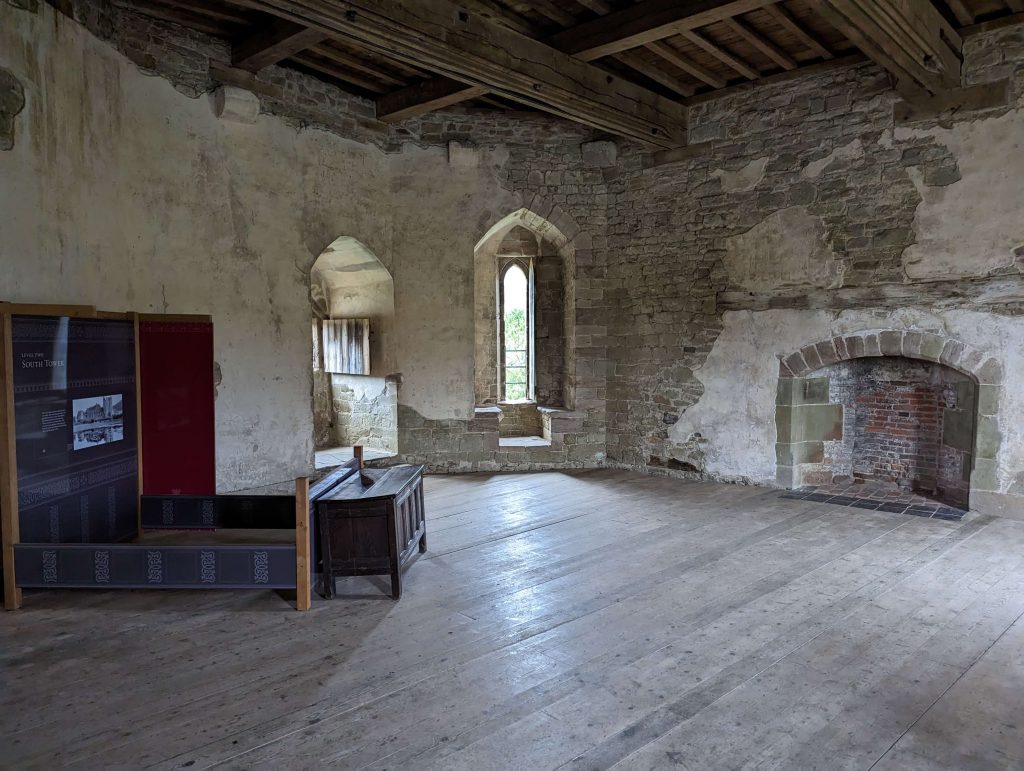
In 1869, John Derby Allcroft purchased Stokesay Castle and set to work on careful repairs. By 1887 the castle was structurally sound and looked much like it had in the 17th century. Allcroft’s goal was to preserve the buildings rather than restore them.
In 1908 the Allcroft family opened Stokesay Castle to the public. The admission fees they received from visitors was used towards the upkeep of the buildings. As time went on the maintenance costs became unmanageable and in 1986 Jewell Magnus-Allcroft entered into an agreement with English Heritage that saw them become responsible for Stokesay’s conservation and would assume ownership upon her death.
Between 1986-1989 English Heritage carried out a careful second restoration of the castle and in 1992 the castle came into the guardianship of English Heritage. Stokesay Castle is now open to the public to visit for an admission fee.
Click below to explore Stokesay Castle with us

